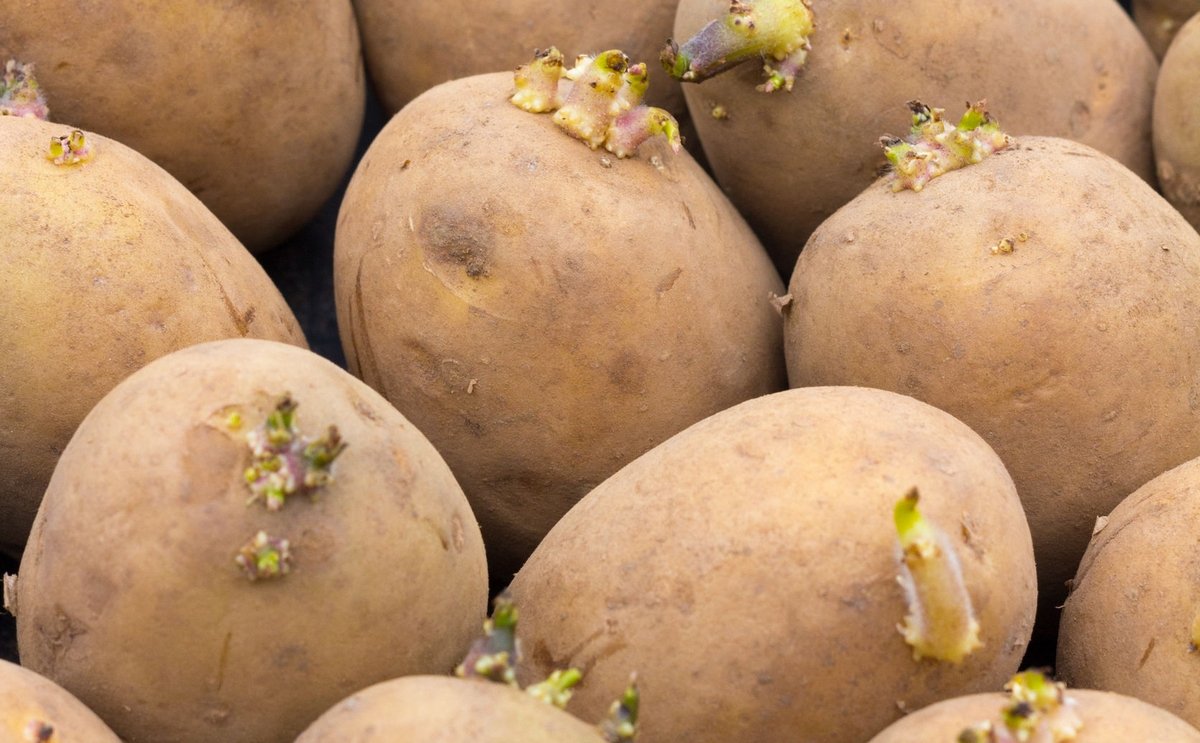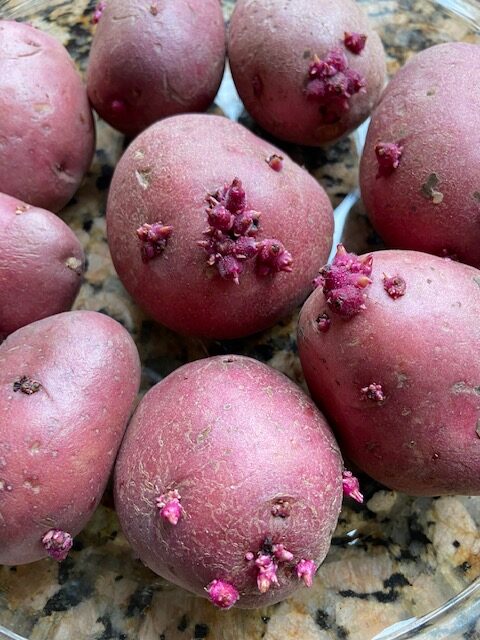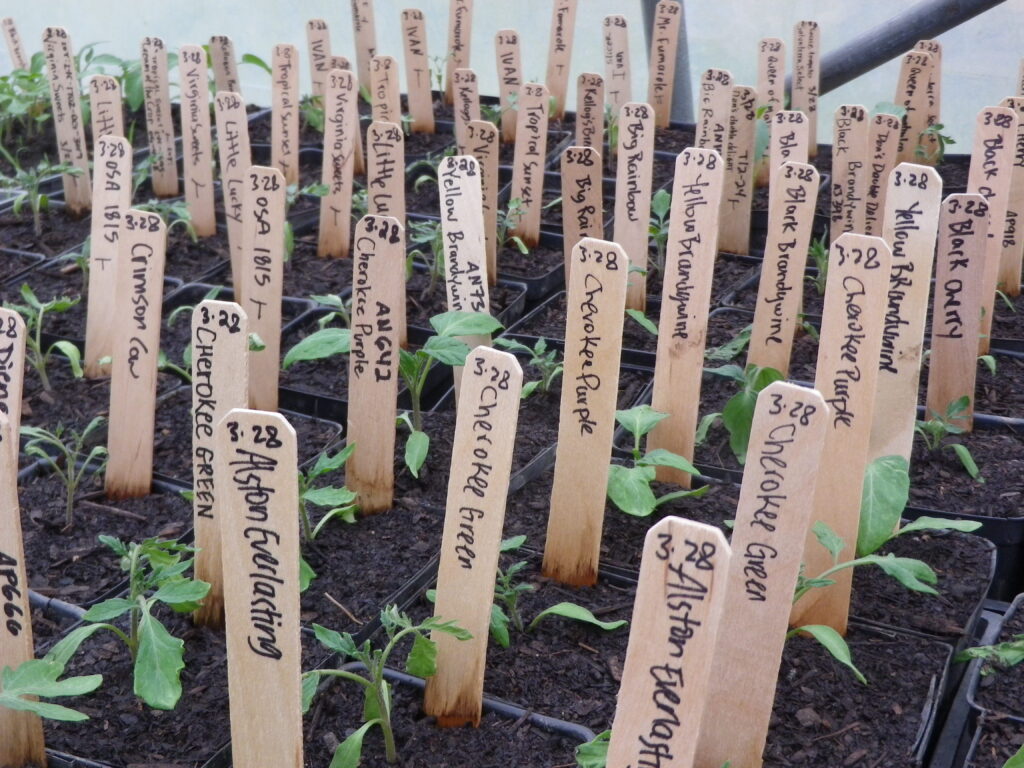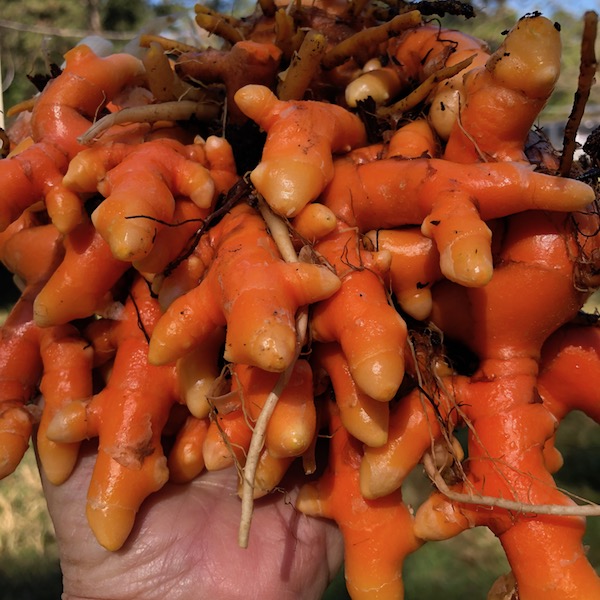
Finish transplanting raspberries and blackberries in March if you didn’t do this task in the fall. Put any compost you can spare on your asparagus, strawberry, blackberry, blueberry, and raspberry beds for a sweet reward in May and June. All of these acid loving berries thrive with a heavy sawdust, shredded leaves or woodchips mulch so top off your beds.
In the greenhouse or under lights indoors continue to sow lettuce, scallions, and broccoli. Start some more tomatoes, peppers and eggplants by late March, to put out in 4 to 6 weeks . Outside you can continue sowing successions of radishes, spinach, turnips, carrots and beets directly in the garden and cover with spun polyester row cover. Presoak beets 1-2 hours before sowing 1/2″ deep, tamp soil when covered. When forsythia blooms, sow pre-sprouted peas, only cover 1/2″-3/4″ deep. To support dwarf peas you can sow 1 oat grain per 5 peas.

Plant your potatoes as soon as possible after St. Patrick’s Day by green chitting. The practice of pre-sprouting seed potatoes before planting encourages early growth. It is widely used abroad, but less known to Americans. Chitting is simple. Spread the seed tubers in boxes or flats one layer deep with the seed end up. Look closely at a seed potato and you will notice one end was attached to the plant. The other end has more eyes from which sprouts emerge. The end with the eye cluster is called the seed end. Place your flats in a warm area (70 degrees) where light is bright but indirect. The warm air stimulates the development of strong sprouts from the bud eye clusters, which, in the presence of light, remain stubby and are not so easily broken off. Allow 1 to 2 weeks for green chitting before planting potatoes in the garden.
As soon as your potatoes are in, it’s time to start the main crop of tomatoes indoors. Tropic and Brandywine OTV are great tomatoes for disease resistant, blemish free large fruits placing high in our taste test each summer. Alston Everlasting, a two bite saladette, is a new farm favorite for taste, productivity and keeping quality after harvest. Compost and prepare beds for outdoor planting that will begin in earnest next month.

Start your own tropical garden bed with plants grown and shipped to you from Nisani Farm in southside Virginia which is owned and operated by three generations of women of color. Their Belizean roots flavor the feel of the farm in such a way that you find yourself in the tropics without having to leave Southside Virginia.

In this forested 50-acre farmstead there is everything from turmeric and ginger to papayas and moringa trees, from medicinal herbs and mushrooms to cut flowers and purple vegetables, from rain garden plants and orchards to bitter melons and leafy greens, and all grown with Certified Naturally Grown practices. You can pre-order spring-shipped Turmeric plants and rhizomes and Ginger plants grown by the women of Nisani Farm online at www. Southern Exposure.com.

By: Ira Wallace Southern Exposure Seed Exchange & author of Vegetable Gardening in the Southeast the new Grow Great Vegetables in Virginia






